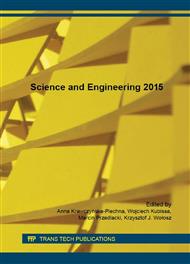p.96
p.101
p.108
p.115
p.125
p.131
p.137
p.145
p.151
Analysis of the High Buildings Structure
Abstract:
An analysis of the high building construction has been presented in the paper. Recently high buildings are getting more popular and more common in urban building industry. Moreover nowadays the main trend of the erected constructions is energy saving. Therefore there is necessity to connect these two features. Very helpful for that purpose can be a modern glazing building elevation, which can be used as a solar collectors. For the analysis five different types of high building structures have been taken. As the first analyzed model, core – frame construction with the columns placed on the edge of the building has been considered. In this case the area of glazing surface has been significantly reduced. That is why in a second model, it was decided to move back the columns from the edge, 1.0 meter inside the building. However, for this type of construction, according to obtained results, horizontal displacement of the top of building was greater than allowed by specified standards. In order to fulfill standard requirements and keep a sufficiently large area of glazing, in the third analyzed model extra beams were inserted on the height of 2.5m. In the fourth model added a little truss.
Info:
Periodical:
Pages:
125-130
Citation:
Online since:
November 2015
Authors:
Keywords:
Price:
Сopyright:
© 2015 Trans Tech Publications Ltd. All Rights Reserved
Share:
Citation:


